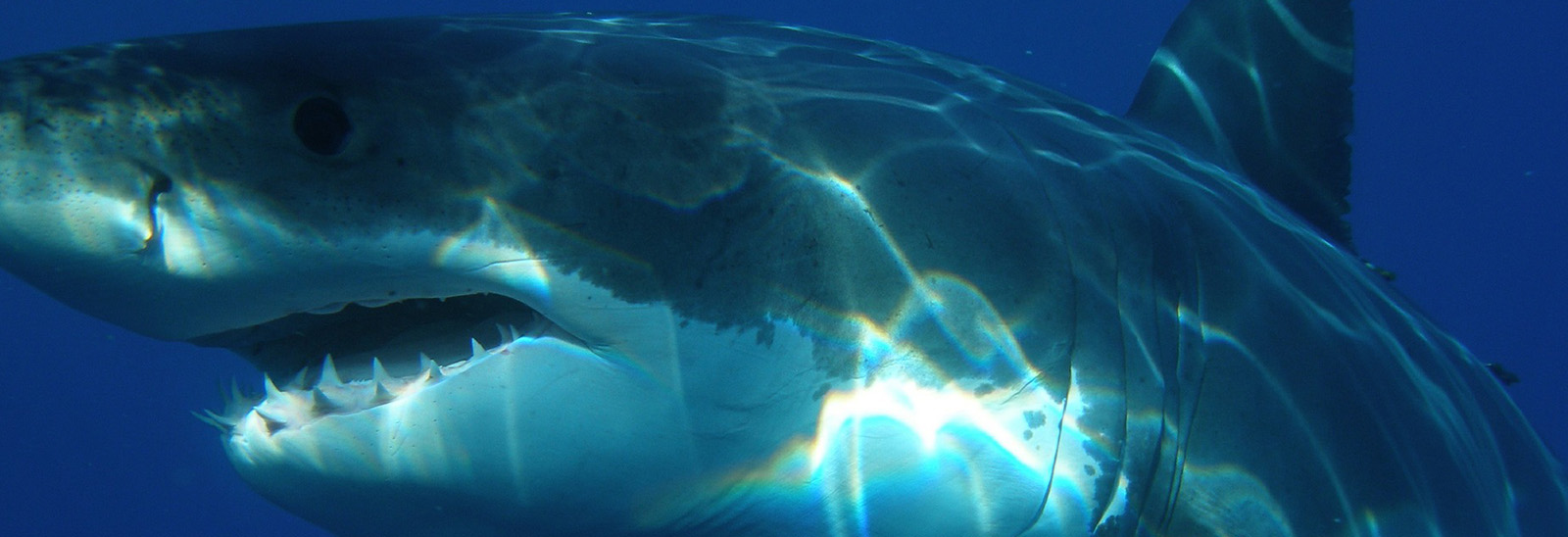June 6, 2017
Five Things about Sharks in California You Should Know

After the movie “Jaws” appeared on the silver screen in 1975, fear of great white sharks rose to legendary heights. Great whites after all are fearsome predators—intelligent hunters designed for high speed (up to 35 miles per hour) and tremendous bite force (up to 4,000 pounds per square inch). And they just look terrifying!
In the past few months, these “man-eaters” of film lore have been sighted in surprisingly high numbers just off the coast of Southern California—from Point Conception to the border of Mexico. Dozens of them swimming and feeding near swimmers, kayakers, and paddle boarders; their mere presence prompting the closure of beaches from San Onofre to Long Beach and eliciting the question, Why?
Stan Glowacki, a senior biologist and fish expert with GPA Consulting in El Segundo, sheds some light on the phenomenon.
“Southern California has become a nursery for great white sharks,” Glowacki says. “These are baby sharks. Six- to 10-foot juveniles.”
Some theories published in media accounts suggest a rise in sea level is pushing the sharks close to the shoreline and the change in water temperature—both warmer and colder—have moved them inward. The sea level has not risen much yet, explains Glowacki, and water temperatures are cyclical. “Although great white sharks seem to prefer cold water, they are also found in warm-water areas,” he says.
Glowacki noted, however, that changing ocean conditions could certainly be part of the puzzle. Additionally, over the past year, the populations of small cold-water fish, including anchovies, sardines, and mackerel, are making a return to the Southern California coast after the retreat of the warm El Niño ocean conditions. Young sharks, such as the ones seen in the coastal areas, feed on these small fish. “They don’t know how to hunt seals and sea lions yet,” Glowacki adds.
The increase in sightings and incidents most likely correlates to the increase in the great white shark population in general. This shark species was near decimation by the early 1990s (credit for this, by the way, has been given to the frenzied killing of great white sharks stirred up by the movie.) But studies published in 2014 showed a reversal of fate.
“There never has been good data on the population size of great white sharks until recently, and we are only now beginning to understand their population dynamics and migration habits,” Glowacki says. “I think that notion (about the movie) is not supported by any real data.”
Glowacki believes the great white shark population off California has increased at least partially because the populations of the shark’s prey base (marine mammals like sea lions, harbor seals, and elephant seals) have increased at a significant rate since the passage of the Marine Mammal Protection Act in 1972. “Basic animal ecology shows that predator populations increase after their prey populations increase,” he says.
With summer around the corner, Glowacki has created a list of five things every beach-goer should know about these sharks.
Five Things You Should Know about Great White Sharks
1. You are not its prey! Although shark-on-human attacks have occurred, the reason behind these attacks are most likely cases of mistaken identity.
2. Shark attacks on humans are rare. The chance of a shark-on-human attack is about the same as winning the Powerball.
3. Sharks (including great white sharks, or carcharodon carcharias) are wild animals. Don’t taunt them or feed them.
4. Avoid swimming at night (remember the opening scene of “Jaws”?); nighttime is a prime time for feeding. And, avoid swimming and surfing in areas where sea lions, harbor seals, and elephant seals are congregating or have rookeries (breeding colonies).
5. If you’re in the water with a great white, try not to panic. (You’re probably saying under your breath, “Yeah, right!”) Really—try to remain calm and do not splash or cause any disturbance in the water. If the shark attacks, repeatedly punch it in the eye or the nose. A good wallop to either will stun the shark.
Stan Glowacki is a senior biologist at GPA Consulting in El Segundo. He has been working in the fish biology and aquatic ecology fields since 1991. At GPA, Glowacki manages biology and environmental compliance for a variety of projects, including bridge and highway improvement projects, flood-control projects, fish migration barrier removal projects, riparian restoration projects, and fisheries habitat restoration projects.